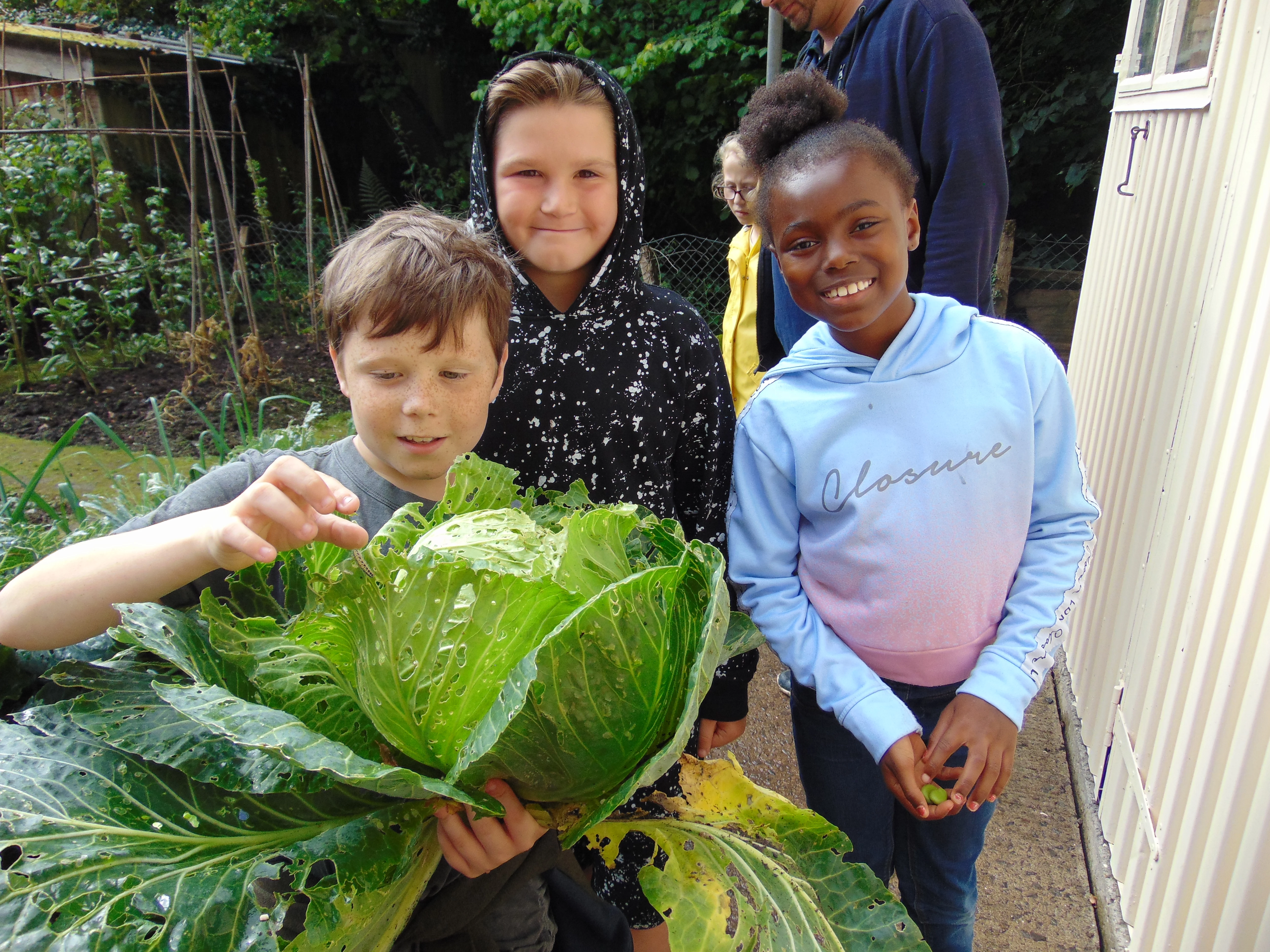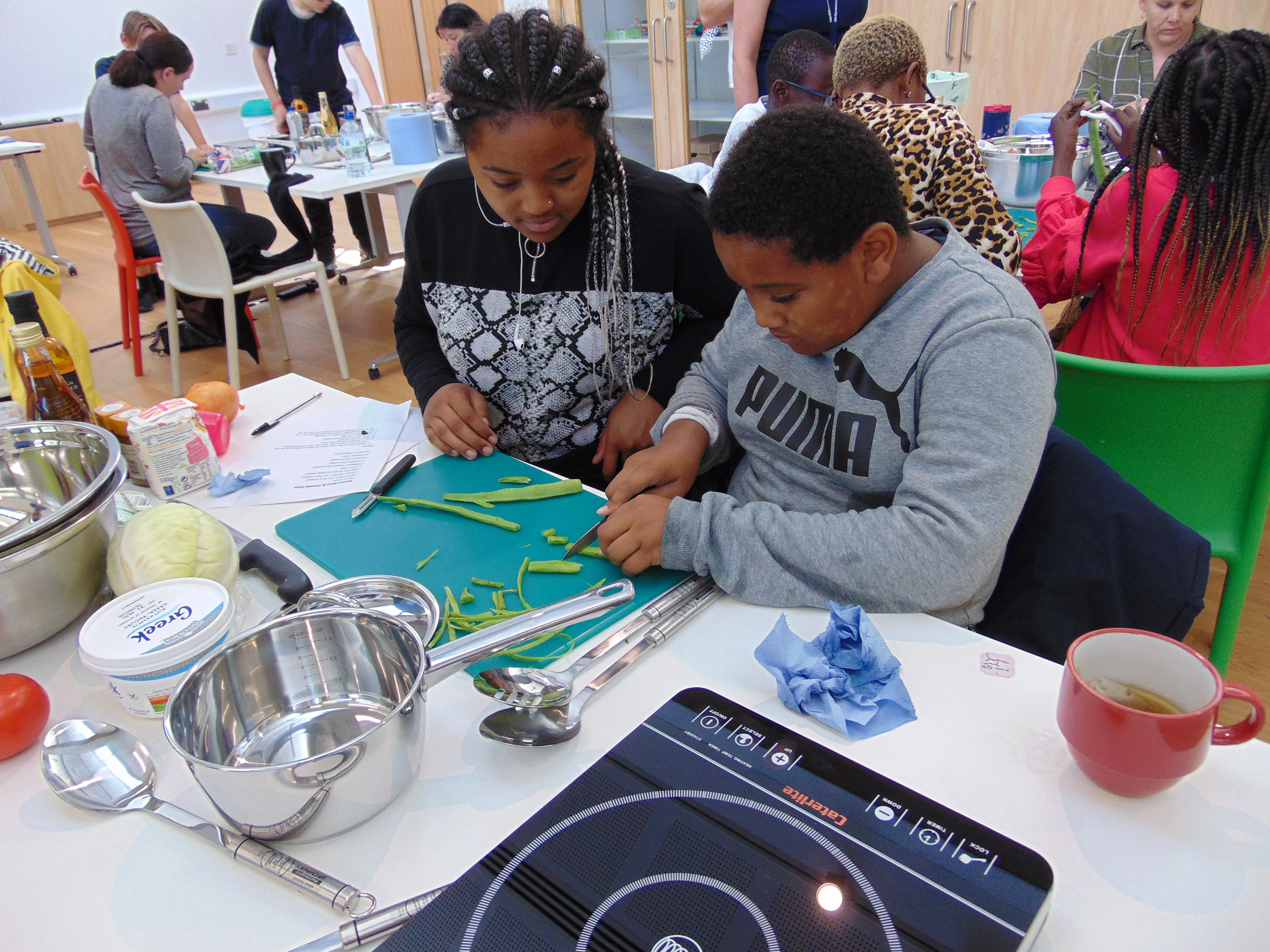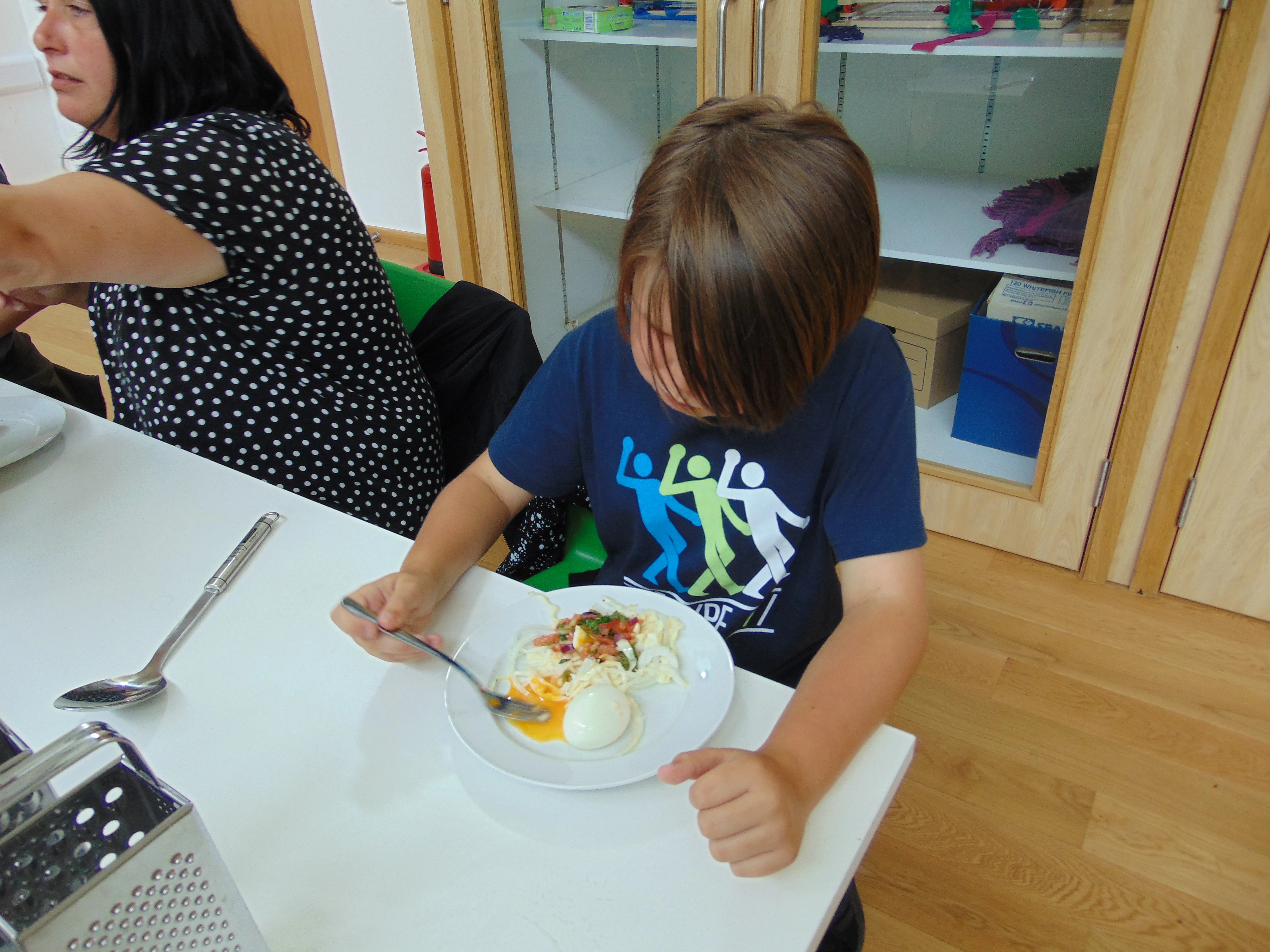Runner Beans, Cabbages and Coleslaw: Family cooking and gardening courses at St Fagans National Museum of History
, 17 September 2019
This August we welcomed families from Taff Housing Association in Canton and Herbert Thompson Primary School in Ely (SHEP, the ‘Food and Fun’ School Holiday Enrichment Programme) to St Fagans to join us for a new family cooking and gardening course, as part of the targeted family learning programme supporting the Fusion initiative and our commitments under the Well Being of Future Generations Act. The programme was developed and delivered in partnership with Cardiff Metropolitan University’s Widening Access department and First Campus. Families enjoyed a hands on experience, learning about growing, harvesting and cooking their own healthy food using produce gathered from the St Fagans gardens.
This was a new venture for us, and after working out how best to set up a “pop up” kitchen in one of our learning studios’ and sourcing all the equipment we would need, we were good to go.
The gardens at St Fagans are full of wonderful produce at this time of year – fruit, vegetables and herbs – lots of which are specialist heritage varieties. By enlarge crops are saved and seeds harvested to re plant the following year, as part of ongoing research into heritage varieties. However, the families who took part were lucky enough to spend time exploring the gardens with Juliet Hodgkiss, Senior Gardening Conservator. She showed them around so they could learn about growing and producing food, before harvesting some of the lovely produce on offer to use later in the kitchen. Runner beans, cabbages, shallots and herbs were all gathered and taken back to the class room.
When they returned to the kitchen, Dean Way, lecturer in Hospitality Management at Cardiff Metropolitan University was on hand to take the families through the process of creating a lovely meal, using the produce they had harvested. Here’s what the talented groups cooked, closely following the recipes created by Dean:
Fennel & Cabbage Slaw
½ small cabbage shredded
1 fennel bulb, cut into quarters and grated
1 White Onion, thinly sliced
50g Yoghurt
1 Tb Spoon of White Wine Vinegar
1 Tb Spoon of Caster Sugar
Salt & Pepper to Taste
Method
- Half the Cabbage – Half Again and remove the Stalk. Then with a sharp knife thinly cut down into strips (shred down finely)
- Cut the fennel bulb into quarters and remove the stalk – then grate on the largest edge of a grater
- Peel and thinly slice a white onion
- Place all the vegetables in a bowl, then toss well. Stir in the yoghurt, vinegar and sugar to coat the salad, then season with lots of black pepper and a little salt. Any leftovers can be stored in a sealed container in the fridge for up to two/three days.
- Serve with boiled eggs.
Runner Bean & Tomato Salsa
3 Runner Beans
1 glove of garlic, very finely chopped
1 medium red onion, very finely chopped
1 large beef tomato, very finely chopped
½ Lemon, juiced
1 tablespoon chopped fresh coriander
1/2 teaspoon chilli powder
3 pinches of salt and pepper
1/2 teaspoon cumin
4 Tb spoon of Rapeseed Oil
Method
- Peel and finely cut the runner beans and blanch in boiling water for two minutes. Place in bowl of very cold water until chilled and remove.
- Crush one garlic bulb and finely chop
- Thinly dice one red onion
- Thinly chop up one large beef tomato
- Cut one lemon in half
- Roughly Chop up a small handful of Coriander
- Place all the vegetables in a bowl, and then toss well. Stir in ALL ingredients and squeeze the juice of half a lemon into the mix.
Following the practical cooking session Dean took the groups through some eye opening and interesting information on healthy eating, taking a close up look at the food we eat and the levels of saturated fats and sugars hidden in so much of it! Look out for the helpful traffic light labels on the front of food packaging which will help you “see at a glance whether a food is high (red), medium (amber) or low (green) in fat, saturated fat, sugars or salt”. (NHS online: reference intakes explained)
As this was a pilot we were all very pleased with how the first courses went. Both groups enjoyed their time at St Fagans and shared some lovely feedback with us. Here’s a couple of the highlights:
“Excellent course, really enjoyed it!” (parent)
“The course is very educational and we all enjoyed it.” (child)
“I think it’s a very good and educational course. Something that appeals to both adults and children and starts children thinking about food choices from a very young age.” (parent)
“We got to taste the herbs as we picked them. I really liked the mint- it tasted like chewing gum. In the supermarket herbs are mainly dried and in packets so you can’t smell or touch them.” (child)
“The kids have told me they want to start growing vegetables in their Nan’s garden - I’ve never seen them eat veggies so fast!” (parent)
When asked what the top three things they had enjoyed about the course were, the families said:
“Learning how to slice vegetables, trying new foods, cooking with my Mum.” (child)
“Making fresh food with my daughter, gaining a better understanding of healthy eating and picking fresh veg.” (parent)
“Picking vegetables, cooking and understanding history.” (child)
“Learning all about the fat and sugar intake.” (child)
Now we’ve tested the water, so to speak, we’re looking forward to developing further opportunities next summer. Thanks to all the families for taking part and the partners for helping to make it happen.




